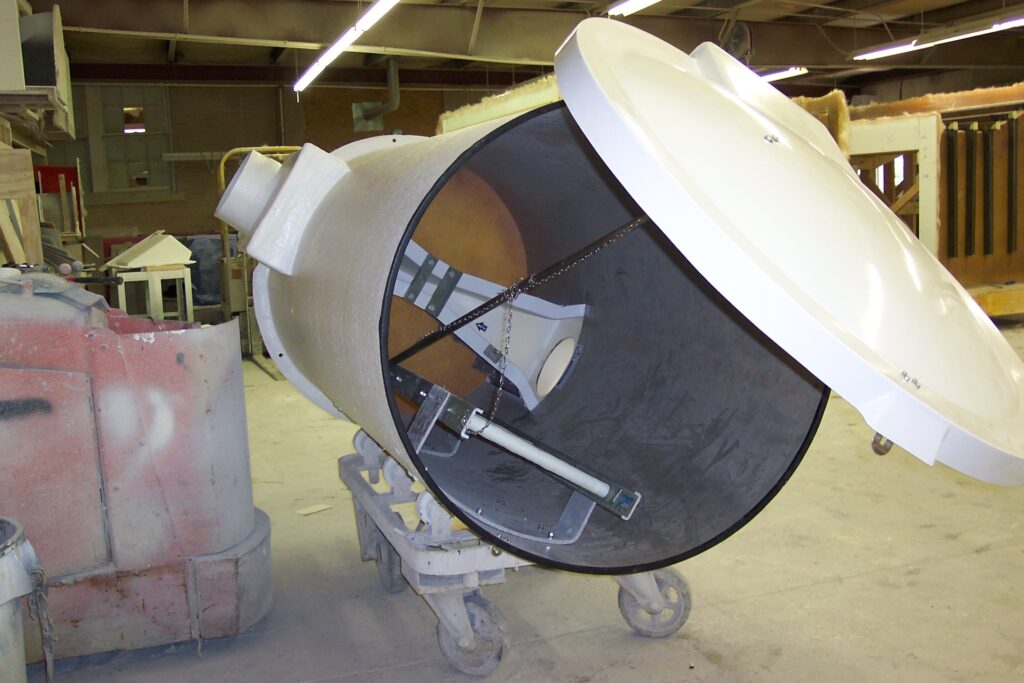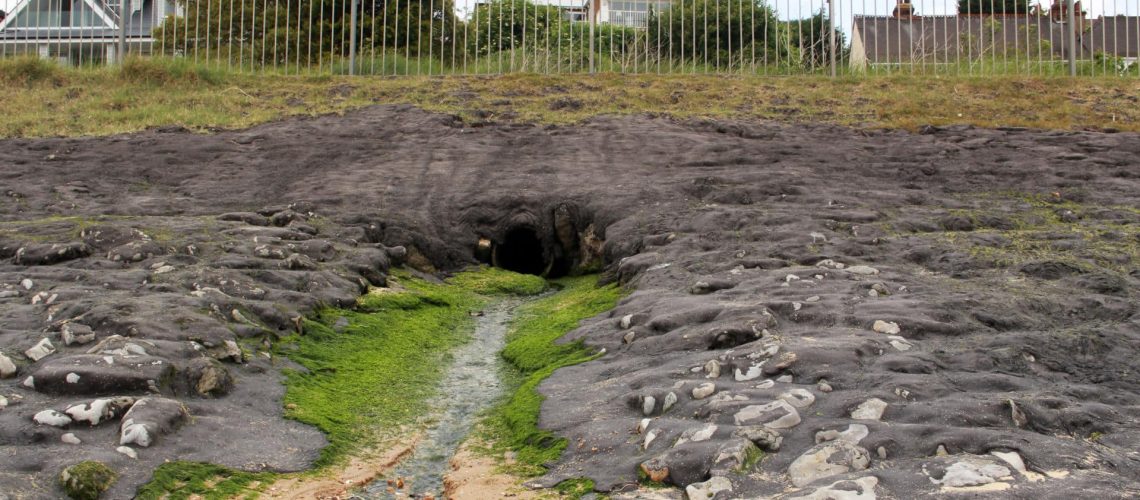Flow rate measurement devices like flumes and weir boxes are used for a variety of applications all over the country. You may think of open channels like streams when you picture a flume, but they can be used in more urban areas too. In fact, quite a few urban applications necessitate the use of flow rate measurement devices to remain compliant with wastewater regulations and avoid costly fines.
Fortunately, the basic function of flumes in urban areas is largely the same as you would find in a field. The most essential difference is that these flumes often have to be secured underground. With tools like packaged metering manholes, though, installing and maintaining urban flumes is easier than ever. Here’s everything you need to know about taking flow rate measurements in urban areas.
How Flumes Work
To start with, it’s helpful to grasp the basics. Flumes work by accelerating a flow through the device to reach a point of criticality. At this point, a measurement can be taken and applied to a formula that will determine the flow rate of the channel. This makes the measurement process remarkably easy because you only have to take one measurement at a specific point. The hard part is making sure that the system is set up properly first.
In order to work correctly, the flow approaching a flume needs to be in a subcritical state. As it passes through the flume, it needs to be accelerated to a supercritical state. That transition must take place to achieve a point of criticality that allows for accuracy at the point of measurement. Criticality is measured in terms of the Froude number. If the number is less than 1, the flow is subcritical. If it’s greater than 1, the flow is supercritical. 1 is the point of criticality.
Flume Sections
The sections of a flume are fairly straightforward. It begins with a converging section, which allows the flow to be accelerated as it passes through. The flow then reaches the throat. Some flume designs, like the appropriately named cutthroat flume, remove this section, but that’s not always usable in every situation. Finally, it ends with the discharge section, which allows the flow to enter the channel again and continue onward.
Flume Advantages
The advantages of flumes are particularly notable when you’re trying to implement them in urban applications. They don’t have that large of an installation footprint, and the maintenance requirements are far less rigorous compared with weir boxes. If you need to fit one in a confined space, the size requirements alone make flumes the clear choice when it comes to flow rate measurement devices.
A lot of urban flume applications will have to deal with debris. Whether it’s runoff from a factory or a sewer system, it’s likely that solids will get in the flow one way or another. Flumes excel at passing solids in a way that weirs simply can’t replicate. Even so, it’s important to consider the type of flume you’re going to implement if you plan to deal with serious solids in your flow. Fortunately, plenty of types and sizes are available, with many being available off the shelf.
Installing Flumes in Urban Areas
When you’re working in a city, you can’t dedicate that much land to flume installation. Every square foot is precious, so you’ll more than likely need to take your installation underground. Fortunately, the underground of cities tends to be quite well developed, so installing or upgrading a flume may be easier than you might think.
Even with space underground to implement a flume into a subterranean flow channel, you’ll still need to be able to access the flume for maintenance and reading measurements. Fortunately, this too is easy thanks to the integration of manholes. By situating a flume at the bottom of a manhole, it becomes accessible from the ground while still being protected from the elements and people of the city.

Packaged Metering Manholes All In One Solution for Flow Measurement
A packaged metering manhole puts the manhole and flume all in one to make new installations simple. The worst part of the installation will be blocking off the part of the city that will undergo construction. Even so, packaged metering manholes are easy to install, so any trouble caused by the process won’t last long if the installation process is done correctly. Because the flume is already connected to the manhole, all you have to do is dig the hole, drop it in, connect it to the channel, and fill the hole back up.
The central benefit of packaged metering manholes is that they offer easy access for measuring flows within a single-piece watertight structure. The best manholes are made from fiberglass, which tends to make the initial construction easier, and the design is inherently resistant to corrosion thanks to fiberglass’ protective resin on its outer layer. While the general design is always the same, you can customize quite a few aspects of the manhole.
Components of Packaged Metering Manholes
Packaged metering manholes have a relatively straightforward design with only a handful of parts you’ll need to be mindful of. In addition to the tube itself, you’ll have to make sure the flow device at the bottom is appropriate for the flow channel you’re integrating it in. Additionally, the manhole needs to have an integral base/mounting flange to properly sit in the installation site. Inlet/outlet piping is necessary too, as it connects the manhole’s flow measurement device to the channel without allowing for any bypass.
While not a direct part of the flume’s functionality, the ladder is an essential component of any packaged metering manhole. Typically, the ladder is made of fiberglass just like the manhole, but that’s only the beginning. A proper ladder must be compliant with all OSHA (Occupational Safety & Health Administration) regulations too, as worker safety is extremely important when it comes to flow rate measurement. Finally, the manhole will need to have a cover, and the type of cover necessary depends on the installation site.
Packaged Metering Manhole Covers
Covers for packaged metering manholes come in many different forms, and you’ll need to find the right one when you’re looking to install a manhole in an urban area. The key to determining which cover would work best for your particular scenario is considering the kind of traffic the area is likely to get the most. For example, a manhole on a sidewalk may need to be different from a manhole in the street. Here are your options for covers.
Domed Top
One of the most common manhole tops is the domed top. As the name suggests, it has a dome shape and is connected to the manhole through typically stainless steel hardware. It opens on a hinge and comes equipped with a fail-open gas strut to reduce the likelihood of a worker getting trapped inside. This also helps prevent unauthorized access, which is always useful in urban areas. The downside of this design is that it can only be implemented in areas that don’t get any traffic. If you expect cars or pedestrians to come by the manhole, this kind of top is little more than a hazard.
Aluminum Top
An aluminum top is a flat-top manhole cover that either folds open or comes off completely. Because the top is flat, it should be flush with the ground surrounding it, eliminating any tripping hazard. This makes the aluminum top the best choice for applications in areas that see a lot of foot traffic. It’s important to keep in mind, however, that standard aluminum tops are not watertight, so you’ll need to opt for a watertight solution if that’s a concern for you. These tops can also be outfitted with lock configurations and spring assists to make opening them easier and prevent unauthorized access.
H-20 Top
With an H-20 highway loading top, your manhole will be outfitted for protection against vehicular traffic. This is the kind of top you’ll want to use if your manhole is in any area that will see vehicular traffic, such as roads or parking lots. Even if only an occasional work truck comes through the area, this kind of top is essential. This is the only kind of top that’s reinforced enough to withstand the weight of a vehicle on top of it.
Finding the Right Flume
With the benefits of manholes clear, it’s time to determine the flume style that will work best for your flow channel. The proper flume style depends on both the purpose of the flow channel and the nature of the flow itself. Of course, size considerations are important too. While many flume styles come in different sizes, they don’t all have a size variation that can fit any kind of flow channel.
Parshall Flumes
The Parshall is the most common and well-researched style of flume on the market. Not only does it come in varied sizes, but it also has ways to account for obstacles when measuring, such as submergence to a certain extent. This type of flume is commonly used in urban applications, but it may not fit them all. The Parshall flume does not have a flat bottom, and that may be a necessity in your flow channel.
RBC Flumes
RBC flumes aren’t commonly used in urban applications. This is largely due to their inability to pass solids as effectively as other flume styles. Urban flow channels are often filled with solids and debris, and any flume will need to be able to pass these solids without issue to ensure that your measurements remain accurate.
Palmer-Bowlus Flumes
Palmer-Bowlus flumes are designed specifically for measuring sewage/wastewater flows, so they can be utilized in a wide variety of urban applications. Plus, they’re especially adept at integrating into piped systems, though you’ll still likely need end connections unless the flume happens to be the exact same size as the pipe itself. Some of the most common applications for this style are dam seepage monitoring, industrial pretreatment, sewage treatment plant flows, and well-pumping tests.
Trapezoidal Flumes
Trapezoidal flumes are typically used in irrigation channels given their shape’s similarity to natural earthen channels. Still, they can be used in urban applications when you’re dealing with a low-grade channel that also has a low flow. Not only can they offer accurate measurements under those conditions, but they’re particularly adept at passing solids. Even solids and debris that do get stuck in the bottom are typically forced out by the brief buildup of water upstream.
H Flumes
H flumes have a rich history of research inspired by the Soil Conservation Service’s efforts after the Dust Bowl period in the ’30s. The modern H flume is a result of research into developing a flume that essentially functions like a narrow-angle V-notch weir. The main difference is that the H flume is self-cleaning and has a flat floor. While more of a modified weir than a proper flume, they still see plenty of urban applications like industrial discharge monitoring, sewage treatment plants, and watershed monitoring.
Flumes From Tracom
Armed with knowledge, it’s time for you to find the right kind of flume to fit your unique urban flow channel conditions. That’s where Tracom is happy to help. We offer a vast catalog of options to choose from with various sizes and styles to ensure that you get the accurate measurements you deserve.
When you’re surrounded by buildings and infrastructure, however, you may need a design that’s a bit more unique. To meet these needs, our design team can work with you on a customized solution. Unlike flume resellers, we offer the expertise of a manufacturer and are happy to put that to work for you. Because we utilize fiberglass construction, it’s easy for us to create a device that’s dimensionally exact for your unique circumstances. Contact our team today to get started on your flume, manhole, and whatever other flow rate measurement product you may need.



